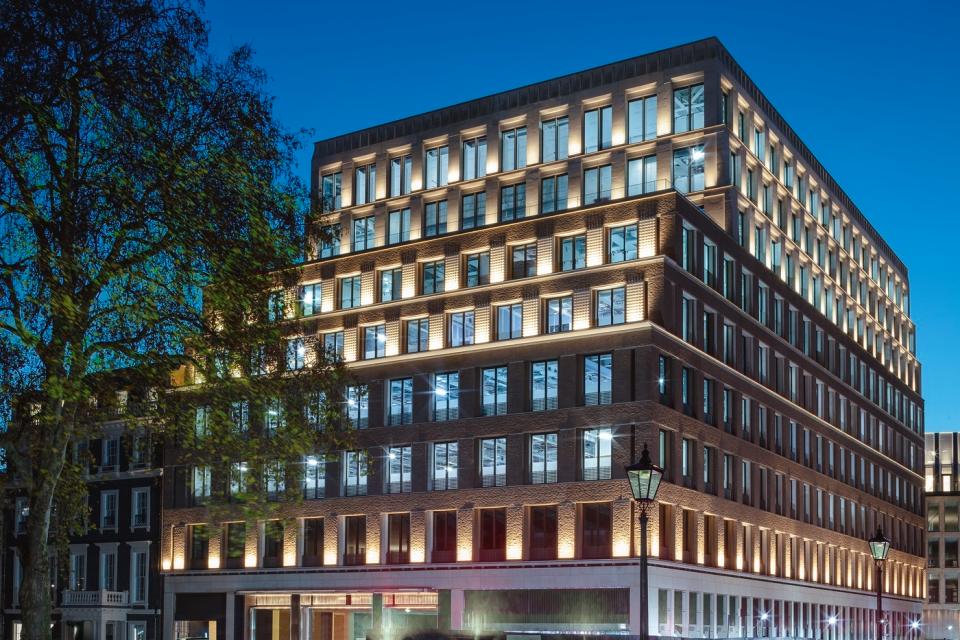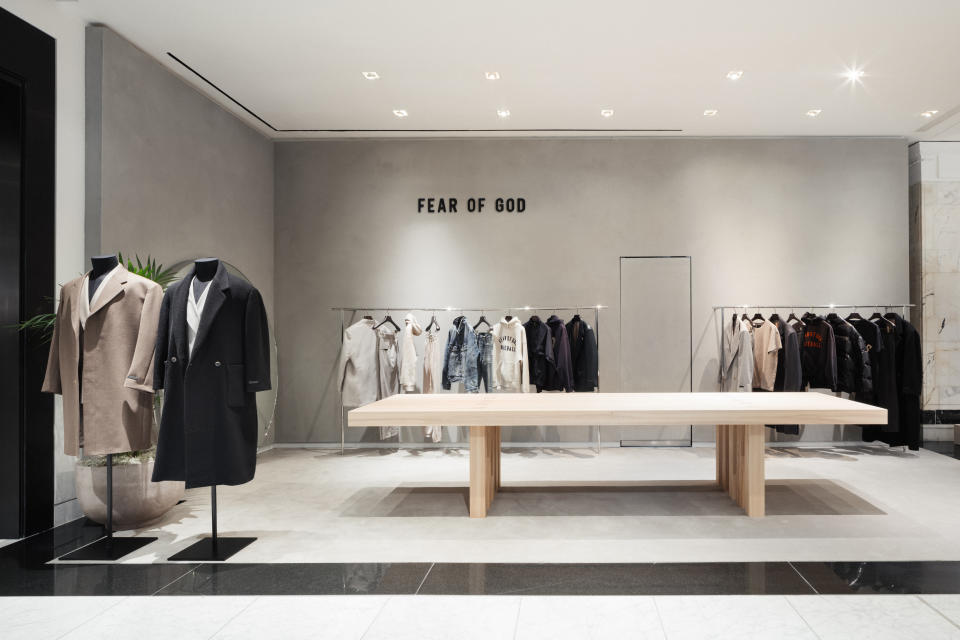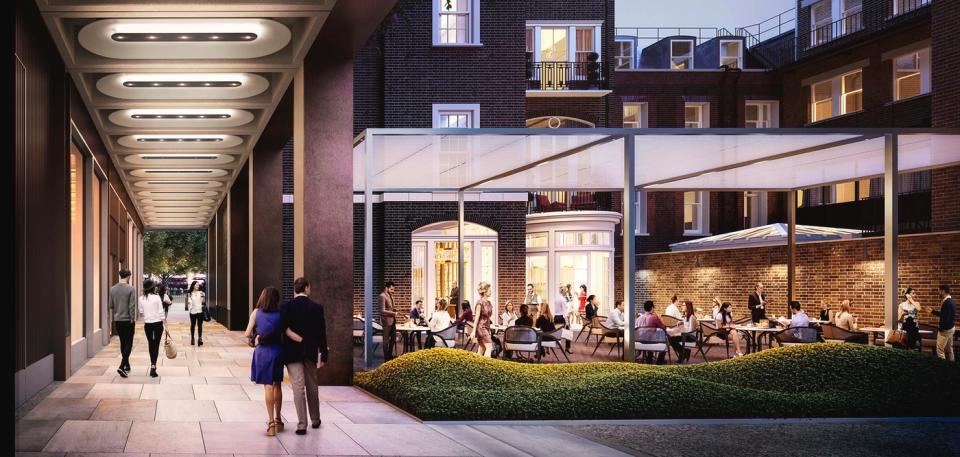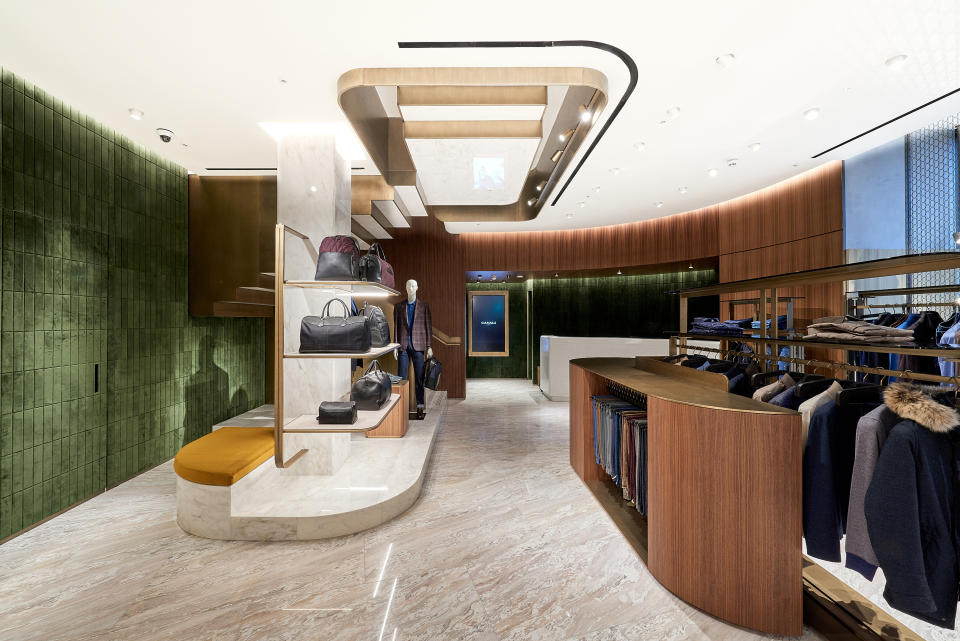What to Watch: A Year of Uncertainty, and Opportunity, for U.K. Retail Awaits

LONDON — The numbers haven’t exactly been encouraging.
During the weekend before Christmas, footfall in central London was down by 8.5 percent, and by 6.4 percent in cities outside the British capital.
More from WWD
They started declining on Dec. 18 and dipped by 1.4 percent on Dec. 19 due entirely to Omicron fears, with people testing and self-isolating so they wouldn’t have to spend Christmas alone, or risk passing the latest strain on to friends and relatives over the holidays.
Boxing Day on Dec. 26, when the post-holiday sales usually begin, was a washout as shoppers remained at home: According to Springboard, footfall across all U.K. retail destinations was 41 percent lower than in 2019. In London’s central West End shopping district, it was 41.2 percent lower than two years ago.
To heighten the drama, a few days before Christmas the Bank of England decided to raise interest rates for the first time since the pandemic began, and despite fears about Omicron’s impact on businesses here.
With U.K. inflation hitting a 10-year high in November, the bank was under pressure to make a move, and while it may have been good news for savers, it was cold comfort to the millions of mortgage-holders facing the prospect of a costlier 2022.
The list of gloom goes on and on: income tax is on the rise, as are train fares, while value-added tax on goods and services is returning to its pre-pandemic level of 20 percent. All of those changes are likely to dent consumers’ pocketbooks and their confidence and make it more expensive for businesses to operate.
The economy is poised for growth in 2022, but it will be slower than originally anticipated due to the uncertainties around Omicron and any future lockdowns; ongoing supply chain woes, and Brexit-related trading friction, not to mention the ongoing dearth of international tourists.

There is no tourism from China, or the rest of Asia, expected in 2022 while 2023 remains a question mark, so brands trading here will have to continue cultivating local tourists.
Brexit, meanwhile, will continue to bite — at least in the short term — with new border controls coming into effect on Jan. 1. Customs declarations on goods arriving from the European Union have to be submitted, and tariffs have to be paid immediately — or they could be turned back. Until now, companies have been able to delay those declarations and tariffs.
Is it any wonder that CBI, the U.K. business lobby, downgraded its GDP forecasts for 2021 and 2022? The group is forecasting 6.9 percent growth in GDP in 2021, and 5.1 percent in 2022, revised down from 8.2 percent and 6.1 percent, respectively.
Despite it all there is optimism in the air, with retailers, businesses and industry bodies looking past the next 12 to 18 months, and pinning their hopes on 2023 and beyond. Some even believe that — barring a brief lockdown or two — 2022 won’t be such a bad year after all for retail.
“Generally speaking, retailers are positive, and much more pragmatic. They have seen how the economy can bounce back once restrictions are lifted and they know that business will carry on, that life will carry on,” said Sarah Goldman, senior portfolio manager at GPE, formerly known as Great Portland Estates, the publicly quoted property investment and development company that owns 2.5 billion pounds of real estate in central London.

Lewis Ronald
Goldman argued that the London customer is incredibly loyal and that nothing will keep them from shopping in town. “Shopping has become a hobby, an experience” and as soon as pre-Christmas Omicron fears subside, they’ll be back shopping once again, predicted Goldman, adding that she closed six key retail deals in the weeks before Christmas.
She is not alone.
Jace Tyrrell, chief executive officer of New West End Company, which represents some 600 brands, restaurants and businesses around Oxford, Regent and Bond streets in London, said that barring the pre-Christmas Omicron panic, the worst is over and 2022 will be a year of consolidation and growth.
He said the brands know what they are dealing with, and they’ve come to grips with cost control and management, although supply chain challenges remain.
The forecasts point to growth: This year, the West End retail and leisure businesses will generate more than 5 billion pounds, while in 2022 that figure should reach more than 7 billion pounds due to a “really strong” second half, said Tyrrell. Those figures compare to 10 billion pounds in 2019, pre-COVID-19.
Both Goldman and Tyrrell pointed to a string of retail and leisure openings in 2022 and to the long-awaited unveiling of the Elizabeth Line, which is set to add an estimated 42 billion pounds to the U.K. economy.
Crossrail is almost ready to inaugurate the Elizabeth Line, a railway system stretching more than 60 miles, and running from Heathrow in the west to Abbey Wood in southeast London. Among the 10 new stations being built for the line are Paddington, Bond Street, Tottenham Court Road, Liverpool Street and Canary Wharf.
The arrival of the Elizabeth Line and its brand new Bond Street station is one big reason why so many brands are moving northward to New Bond Street.
GPE has been particularly busy in the New Bond Street neighborhood.
It has recently opened a development known as Hanover, a 221,500-square-foot mixed-use development that includes the Medici Courtyard, a public courtyard where Louis Vuitton recently hosted a private event and that’s home to The Maine Mayfair, a new restaurant where Tommy Hilfiger held its post-Fashion Awards party in November.

Other businesses at Hanover include Canali and the London Fashion Academy, which is supported by Mr. Jimmy Choo and Moyses Stevens, the only florist to hold a Royal Warrant. Pronovias will open there next year.
Some see 2022 as a year of transition, and opportunity, for retail in the U.K. and Europe.
Anita Balchandani, partner, head of apparel, fashion and luxury for EMEA at McKinsey, said that 2022 will bring “uneven recovery” with North America and China proving “more resilient” than Europe and the U.K.
She also believes that while pent-up demand will continue to drive sales, supply chains will remain under pressure and retailers and businesses will have to get used to a backdrop of “unpredictability.”
Asked about Harrods’ decision to push its Boxing Day sale forward by 10 days, Balchandani said that was a clear example of the retailer planning ahead and trying to make the best of that unpredictability.

Courtesy
“We saw a big pull forward generally with holiday shopping. People were excited to be shopping early and celebrating the holiday,” but were also concerned about whether gifts were in stock or could be delivered on time given the uncertainty around Omicron and how fast it was spreading.
She said it was clear that Harrods wanted to mitigate those stresses, and give itself a longer window in which to fulfill sales and deliveries and sync up with the sales of online competitors.
Looking ahead, she said that 2022 will be the year when brands should be looking to bring online and physical stores closer together and a year of taking stock, with a “flight to quality” and brands “right-sizing” the number of stores in their portfolio.
“The reality is that businesses are still over-retailed and over-stored,” she said, adding that 2022 is also a perfect moment to “take stock of overproduction and look at how they can use digital to eliminate physical wastage.”

Canali/Carolina Mizrahi
Goldman of GPE also believes that a “resizing” needs to take place, and that retail properties need to be viewed as multipurpose, experiential spaces.
She said that retailers don’t necessarily want their stores to be as big as they were in the past and “the trend seems to be for two levels of trading.”
So she and her team are thinking of other ways to organize the spaces they have at their disposal and have recently leased a basement site on Oxford Street to BBB (Boom Battle Bar), which offers activities including competitive gaming, ax throwing and darts.
Goldman said that “multidiscipline” buildings will be the future.
“It’s more about how an entire building can work in its environment” and how spaces can be about retail but also about eating, entertaining and socializing. She pointed to Westfield London and Bicester Village as offering activities that interest the whole family — not just diehard shoppers.
Sign up for WWD's Newsletter. For the latest news, follow us on Twitter, Facebook, and Instagram.